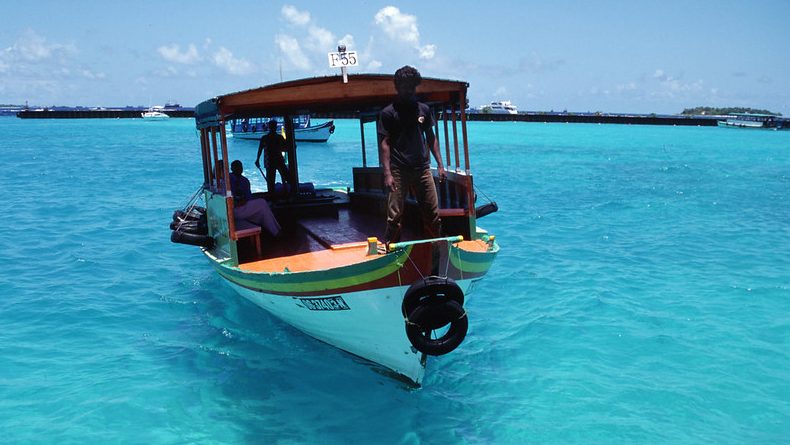Diving in the Maldives
The 1190 islands of the Maldives are spread out across the Indian Ocean and form 26 natural atolls. They boast a rich cultural tradition of beautiful beaches, an underwater paradise and historic royalty and pageantry.
Arguably one of the best diving destinations in the world, the fascinating array of sealife and clear visibility attracts the best divers from around the world. The islands stretch from the Western tip of India to the Equator covering a gigantic area 60,000 sq miles wide. Fishing is the main trade of locals and the graceful dhonis sailboats take visitors on their dives. It’s a tropical paradise of crystal lakes, coconut palms and sunken lagoons.
The lagoons are normally a brilliant bright blue, with amazing coral reefs and abundant marine life. Strict local regulation of fishing (still done using a rod) and commercial exploitation has kept its marine environment in a near-pristine state.
However, In 1998 a rise in sea temperature, lasting two weeks, stripped the reefs of a symbiotic algae that caused ‘bleaching’ of the coral. While bleaching can be devastating, most of the Maldives coral reefs emerged unscathed, and it appears the process has not harmed any other marine life.
When to GoThe tropical water of 27 – 30C temperature are perfect for dives and explorations. The January monsoon clears the waters throughout the spring to give up to 250ft of visibility over the reef edge. Early May is the plankton season which reduces visibility in the eastern atoll to 20 metres and is best avoided for diving.
During the autumn months you can witness the gathering of the Manta Rays, harmless giant disc-shaped sea creatures up to 20ft in diameter which gather around the plankton. You can witness their spectacular mating dances at this aqua festival of nature.
Diver’s ParadiseAlthough they have temporarily lost some of their technicolour splendour, the reefs are still a scuba diving and snorkeling wonder world and the most exciting wildlife is under the water. Anyone with a mask and snorkel will see butterfly fish, angel fish, parrot fish, rock cod, unicorn fish, trumpet fish, bluestripe snapper, Moorish idols, oriental sweetlips and more. Larger life forms, eagerly sought by scuba divers, include sharks, stingrays, manta rays, turtles and dolphins.
Wreck diving is also possible. The “Maldive Victory” is the Maldives most famous sunken treasure ship, and cargo is still trapped underwater. A wreck in the Halaveli Resort is home to a population of Marble Stingrays, the pigeons of the Maldives that swim around the wreck seeking attention and food from passing divers.
Tips for Divers
– In order to Scuba dive, you must bring your log book or other evidence of qualification. Beware of the Maldivian strong currents. Check the direction of the current and dive on an incoming tide, and cary a surface balloon or signal.
– Beware of sharks! There are a number of sharks around the Maldives, the nurse, whitetip, reef blacktip, grey reef and silvertip all inhabit the reefs but are usually harmless to humans unless provoked.
MORE INFORMATION
[http://www.maldive.com \t _blank ]The Maldives – a Divers’ ParadiseKnow how and detailed info for experienced and novices divers in the Islands
Manta Rays – the gentle giants of the OceansObserving the annual migration of these beautiful giant sea creatures




